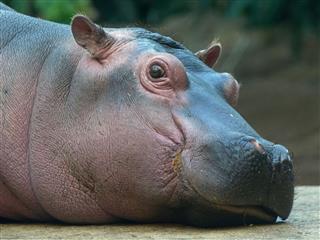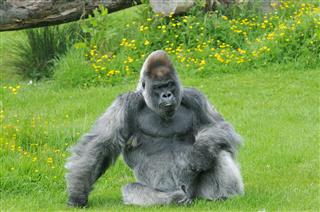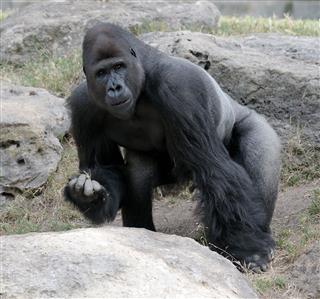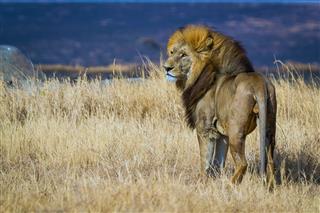
Chomp, chomp, chomp, it’s a jungle out there! The bite force of an animal not only helps in eating, but also in hunting and defense. In the following article, animals with the highest bite force, or most powerful bite force, have been listed…
If the ‘King of the Jungle’ – the lion – had no teeth, life in the Savannah would be totally different. First off, he would be known as the ‘Joke of the Jungle’, and things would have not been so eventful. As is the norm everywhere, the key to survival in the wild too is to always be ahead of the competition. In the jungle, or the animal kingdom, it is the chomping power, or the bite force of an animal – to put it more formally – that matters. Everything, right from the animal’s feeding characteristics, to the evolution of its community, is linked to the bite force that he/she possesses.
In short, the survival of the fittest greatly depends on how well a species can put its chomping power to good use. Here are some of nature’s greatest chompers with a powerful bite force. The list follows a decreasing order of the bite force value, measured in PSI (pound per square inch).
Note that the values mentioned in this article may exhibit small variations from species to species, and from source to source. The values are largely based on a mix of evidence, estimates, and mathematical calculations.
Lion

Let us begin with his highness – the lion, also known as the ‘King of the Jungle’, although he has never traveled to a jungle, or probably doesn’t even know what a jungle is. Anyway, he is the king, he gets what he wants! So, a lion – a heavyweight predator, who stands 6.5 feet tall, packed with 550 lbs of pure muscle, oozing with strength and ferociousness, and wearing a huge, fuzzy mane (which only suggests a badly needed barber) – is known to deliver a bite force of 650 psi. While the number sounds big, that’s the lowest among the cat family; an embarrassment rather.
Grizzly Bear
The bite force of a bear is measured at 975 psi; somewhere between that of the lion and the tiger, as you will see as you read further. It is said that with a bite force as large as this, bears can easily crack a bowling bowl, not that they would willingly do that and risk chipping their teeth. Bears are huge mammals, with some species weighing up to 1,700 lbs and reaching a length of up to 10 feet. With such massive bodies, we are sure that they would be clear winners for something like the ‘killing-your-prey-by-sitting-on-top-of-it’ competition, if not the chomping competition.
Tiger

If nature was Pablo Picasso, then the tiger would have been her masterpiece! One of the most ferocious and finest predators in the wild, the tiger is the largest in the cat family. Standing 11 feet tall, and weighing as much as 670 lbs, this fearsome hunter silently brushes through the forest and camouflages its black-striped, reddish-orange fur with the tall grasses, so that its prey does not sense its impending doom. And when the carnivore finally strikes, it sinks its canines into the prey with a bite force of 1,050 psi – way more than that of the lion. This is probably the reason why the tiger lives a solitary life for most part; with strength like that, who needs a ‘pride’.
Hyena

Every large carnivore seems to be giving the lion a run for its money. If you can outrun a lion or a tiger, then you may have some hope, because at some point, the animal would give up the chase. But, if you are ever chased by a hyena, then you may have to run for the rest of your life! Amazing stamina has made hyenas one of the most successful predators in the wild.
Hyenas can chase their prey for more than 5 km, maintaining a speed of 60 km/hr. Eventually, when the prey goes down with exhaustion, they begin feasting on the flesh, while the shocked and tired prey is still alive. They begin by chomping on the softer sections of the body, then the tougher ones and finally the bones, leaving almost nothing. Scientists say the bone-crushing ability of a hyena is superior than that of a brown bear. And all this mega-chomping feat is accomplished by this hunter with its powerful bite force of 1,100 psi.
Gorilla

Gorillas – 6 feet tall giants, weighing up to 400 lbs, strong, peaceful, intelligent, and shy animals. After chimps and bonobos, gorillas are our closest relatives. Their diet mainly comprises leaves, stems, shoots, insects, and fruits, depending on the species. Given their diet, you may think that the bite force of a gorilla should be much lesser than other mammals. However, this is not the case. This gentle giant is capable of biting down with a good amount of force – almost 1,300 psi. It is, however, less likely for a gorilla to use such an amount of bite force in feeding. This awesome bite force is reserved for conflicts that the mammal may find itself in, for example with leopards, who are one of the predators of gorillas.
Jaguar

If you thought that the tiger had the strongest bite force in the cat family, then you’d be wrong. This distinction goes to the jaguar. Believe it or not, jaguars can deliver a bite force of a whopping 1,350 psi – a bite that is twice as powerful as that of the lion. You see, big cats such as the lion and the tiger kill their prey by biting down their throat and strangulating them to death. The jaguar, on the other hand, goes directly for the skull, crushing it and piercing the brains with its long and thick canines. With a strong, stout body, weighing up to 211 lbs, and such a strong bite, this hunter can also crack open the shells of armored prey, such as turtles.
Hippopotamus
Whenever we imagine a hippopotamus, the first thing that flashes in our mind is its enormous head and those long, thick, giant, canine ivory teeth. Each lower canine can reach up to a length of 20 inches, while the lower incisors can reach a length of up to 16 inches. On an average, adult males can weigh up to 4,000 lbs, and can be 17 feet long. Hippos are herbivores, and live on grass and water plants. So, what are those large ivory teeth good for? They are good for territorial fights and conflicts with other animals, and can be used to deliver a bite force of 1,825 psi.
Hippos may look docile, slow, and calm and composed when they are enjoying a dip in the water with fellow hippos. However, when in the mood, their aggressiveness knows no limits. These mammals are known to be ill-tempered by nature, especially males, who are extremely territorial as well. Many cases have been documented where hippos have attacked humans without any apparent provocation, and thus they are labeled as one of the most dangerous large animals in Africa. In fact, in Africa, more human fatalities are linked to these mammals than any other animals.
Alligator

First things first, alligators are apex predators; in other words, they are on top of the food chain, and eat other animals, no one eats them — well, except humans, who eat anything that moves. These reptiles are known to grow to 14 feet in length and weigh more than 990 lbs. If the alligator were a WWE wrestler, then it would have been famous for its ultimate move – the ‘death roll’. An adult alligator is believed to possess 74 – 80 teeth. And what does it do with so many teeth? It bites its prey, and starts spinning or moving in the water so violently, that chunks of meat just come tearing out of the body. This move is called the ‘death roll’. Any guesses how much bite force is exerted during this ghastly maneuver? A monstrous 2,125 psi!
Saltwater Crocodile

And the gold medal in the chomping competition goes to … Mr. Salty Croc! With a body that can weigh up to 4,400 lbs, the saltwater crocodile is a 23-feet long monster, capable of destroying everything in its path, except for poachers with nets and guns – cowards! With a large jaw structure, jaw muscles as stiff as bone, and sharp teeth, a crocodile’s head is nature’s ultimate machine, built for clamping down anything that gets inside its mouth.
Certain bite tests in laboratory settings conducted by experts have confirmed the saltwater crocodile as the ultimate chomper of the wild; the reptile can shut its jaw with an unbelievable force of 3,700 pounds per square inch!
Special Mention
Great White Shark
How can we forget this animal who has managed to scare the s**t out of every single creature in water – including fishermen, surfers, and naval soldiers. The great white shark – a 5,000-lb killing machine, armed with about 300 serrated, triangular teeth, and an acute sense of smell to detect its food, is the largest predatory fish on earth. And if all these were not enough to make this monster a nemesis of aquatic life, it can also detect electromagnetic fields generated by animals.
Its bite force? With the help of an experiment, scientists have estimated that a 21-foot long great white shark may be capable of producing a bite force of a whopping 4,000 psi; real data from a live great white shark, mind you, may cost a dozen limbs and a few torsos, etc., so experts thought it best to stick with an estimated value.
Tasmanian Devil

Any research or read on animals with a powerful bite force is incomplete without the mention of the devil who roams in the woods of Tasmania – the Tasmanian Devil. This small, stout, strong carnivore marsupial is capable of chomping down its prey with a bite force quotient (BFQ) of 181.
The bite force of all the animals mentioned above were calculated in PSI. PSI denotes a pressure that results when an area of 1 square inch is subjected to a pressure of 1 pound force. Bite force quotient, however, is derived by dividing the bite force of the animal by its body mass. Through a series of tests and studies, scientists have concluded that the Tasmanian Devil is the mammal with the strongest bite force quotient on earth. In layman language, the creature generates the highest bite force for its size – it weighs no more than 26 lbs.
That concludes our special chomping edition on some of the most powerful chompers of the wild. If you think there are any other animals with great chomping power, then feel free to leave your input in the comment box below. Chomp!















